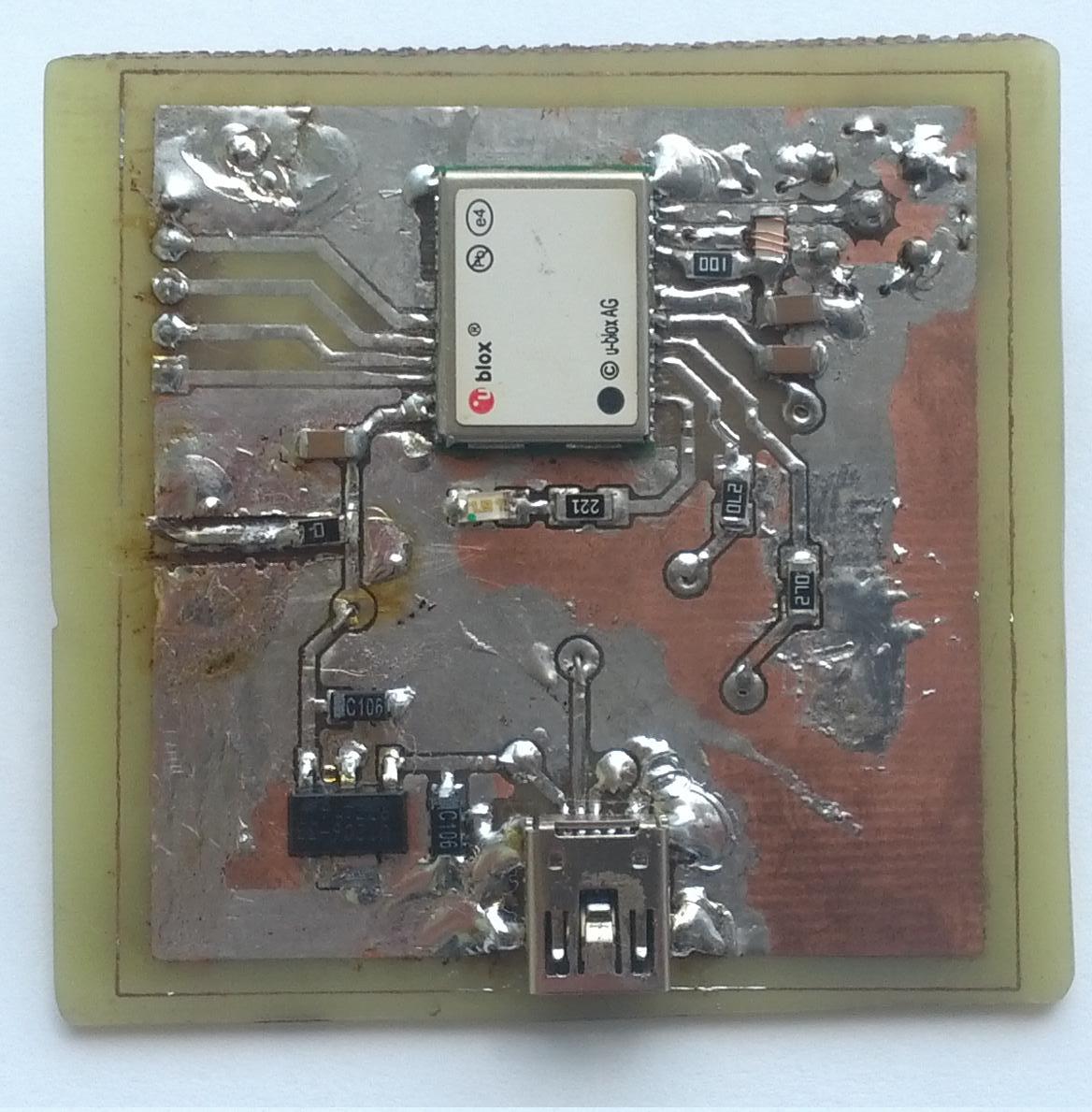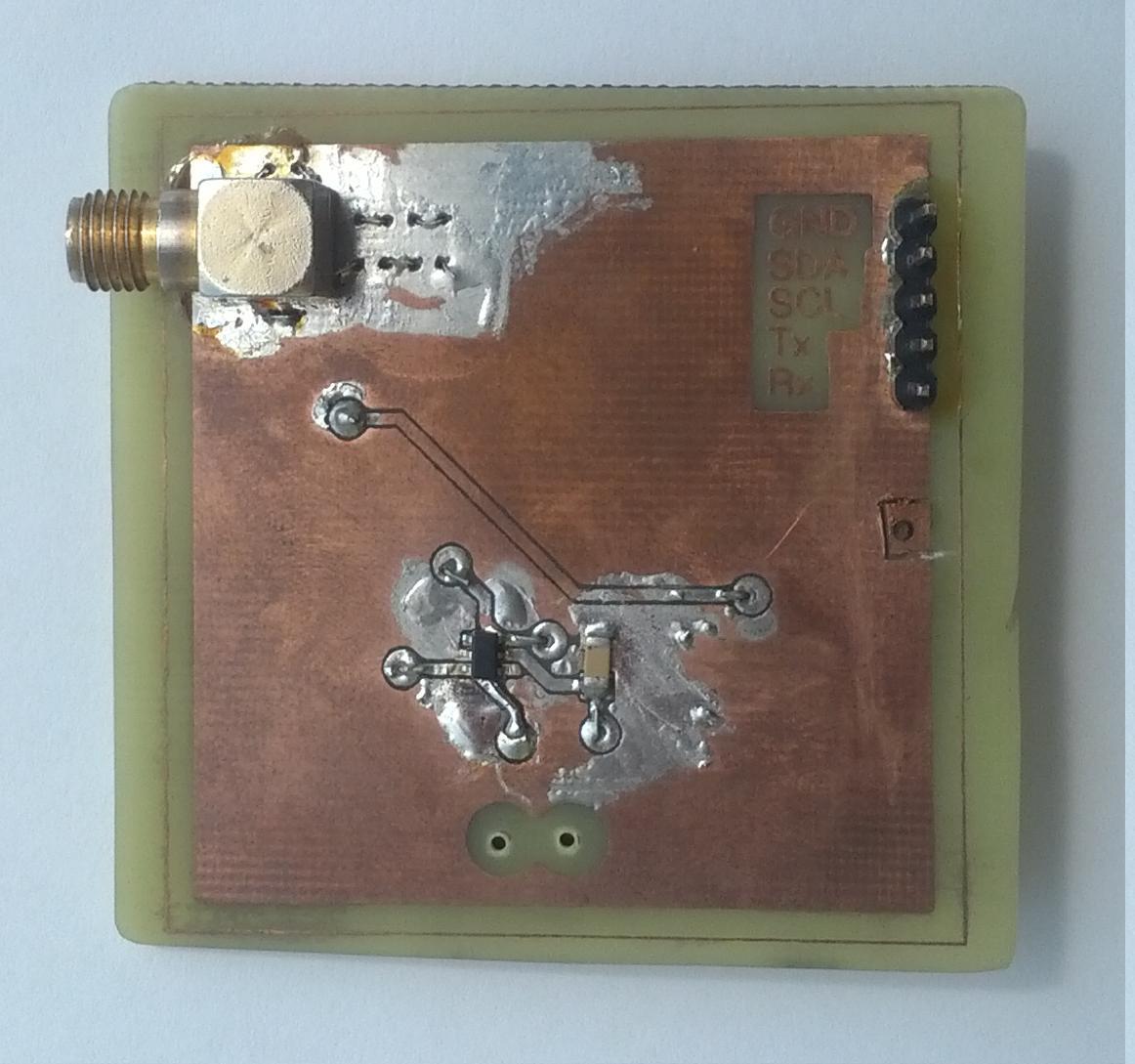Positioning module on the base of the u-blox NEO-7M

Decided propiarit your little project, and at the same time to tell you about a great GPS module from a Swiss company u-blox.
So, the answer to the question that arose after reading the title, people who are not familiar with u-blox:
Why u-blox?
The answer is:
the
-
the
- Availability of GLONASS on Board the
- available documentation the
- the Presence of private service AGPS
There is also support for that I even successfully managed to communicate.
a Little about the module:
Dimensions: 12.2x16.0x2.4mm.
Of course, the module is too big for the mobile phone, but small enough for automotive solutions, or, for example, quadrocopter, and also comfortable for hand-mounting on the Board.
Specification GPS receiver: 56-channel core is of the 7th generation from u-blox.
Supported positioning system: GPS L1 C/A, GLONASS L1 FDMA, QZSS L1 C/A, SBAS: WAAS, EGNOS, MSAS Galileo E1B/C.
Galileo is not yet launched, but due to the fact that there is the possibility of firmware updates, after the full launch of the system, I hope to be, the possibility of its use.
data update Frequency: to 10 Hz.
The frequency can be changed programmatically in the process of working with the module. By default 1 Hz.
Accuracy:
the
-
the
- GPS up to 2.5 m the
- GLONASS — up to 4m
Support active and passive antenna
Nothing unusual, just a fact. The truth is at 7M there is no possibility to programmatically turn off power to the active antenna, so if you want energy efficiency you need to make one of the suggested documentation schemes hardware off from the outside.
Interfaces: UART, SPI, I2C, USB
UART and I2C at the same time, but SPI should train muxit with output D_SEL. Accordingly, you can make the managed switch, such as connecting the GPIO to the conclusion D_SEL. Frankly I have not tested SPI, since for my purposes, the UART is much easier. And the switching exchange Protocol "on the fly" I see no great meaning.
Price: ~15$ from the Chinese.
Here is the module itself:

summary of the previous 270 series, or how it all began
In the beginning of the year I bought a car and in the car without a multimedia system in modern times at all. Of course you can say "Buy for$ 300 from the Chinese and stay out!" But I'm an engineer and I'm interested to make something of myself, to understand the technology. Experience of developing automotive multimedia systems I already have, though not with 0, it was interesting to try. However, this is another story she will tell next time. Now about the main thing — any multimedia system can not do without navigation. Hence the conclusion — you need to have a GPS module, map, routing,
PCB or as it was the first time
As it turned out, on closer inspection, PCB design is not so complicated as it seems at first glance. All what you have to use is accompanied by copious amount of documentation with the model diagrams and explanations. In fairness, I have not looked at the documentation of other vendors, because after study of the proposed u-blox, was more than satisfied.
As a result of my research turned out, to my untutored eye, quite a normal PCB design. The schema can be downloaded here. There are ready to print .pdf files for further use in LOT.
I'm willing to listen to criticism, because seriously, radio has never worked — hence the possible errors, even rude. All the schematics I did in Eagle Cad Soft. Tool for me was very convenient, "+" in addition a huge number of ready libraries with a variety of different elements that makes a community.
Below are skrinshoty schematics and PCB:

The circuitry that I used are readily available in Russia. With the exception of the RF inductor 27nH that the manufacturer recommends(but hand made works not bad).

PCB may not satisfy certain requirements for such schemes, on this occasion again I would not mind to receive feedback.
To remove the process of making the PCB and soldering of components I have had no desire, so we can offer only the final version, if anyone is interested by the abbreviation LUT is a huge amount of wonderful videos on youtube.
After etching and soldering turned out here such a scarf:

The upper side of the printed circuit Board:

PS Yes, filmed on calculator. Yes, the farm. Yes, a lot of solder.
On the bottom side of the Board there are 5 pins:
the
-
the
- 2 output UART labeled as "Rx" "Tx" the
- 2 output I2C labeled as "SDA" "SCL"
- 1 contact to signal "ground"
Also has a SMA — female connector for connection of active/passive antenna.
On the upper side there is a single pin is 3.3 V. It was not planned and was not divorced on the PCB initially, hence it turned out hanging in the air condenser.
Note that this is the second revision of the Board and somewhere in the depths of the Gita is hidden first, without power LNA. Well, as could see the attentive reader, the current fees are a bit does not match the schematics and PCB.
A few words about the antenna. I use active antenna, all ordered from the same Chinese for ~8$. There was an attempt to make my own, but a theoretical framework, along with the elemental, while not enough to make the active antenna is of acceptable quality.
why I wrote it
Now behave a bit short-tempered and will go to samopalnoy part. In addition to the miracle Board, which I must say was not the most time-consuming part of the process, I wrote a ton of other code (or to be precise it is).
U-blox has its own binary Protocol, which along with the NMEA is able to give location data, and more. In General without hesitation I did the library for the UBX Protocol*.
Writing doxygen comments took a lot of time, but even so I mastered.
Maybe next post I will talk more about the capabilities of this Protocol. In particular, the use of AGPS when working with the module.
Opinion
In conclusion, I want to add: all of what is written above successfully works in conjunction with PC and Cubieboard. Naturally, not all tested, but I do not have enough hands unfortunately.
The main drawback of this module is that GPS and GLONASS can not work simultaneously. Have software to switch between them. Most likely that is waiting for Galileo.
Sources:
General information about modules, u-blox 7 generation;
Specification the 14th revision of the Protocol UBX.*.
*At the time of this writing, the latest is the 15th revision. The author is going to implementerat new Protocol features.
UPD: added to DIY
Комментарии
Отправить комментарий